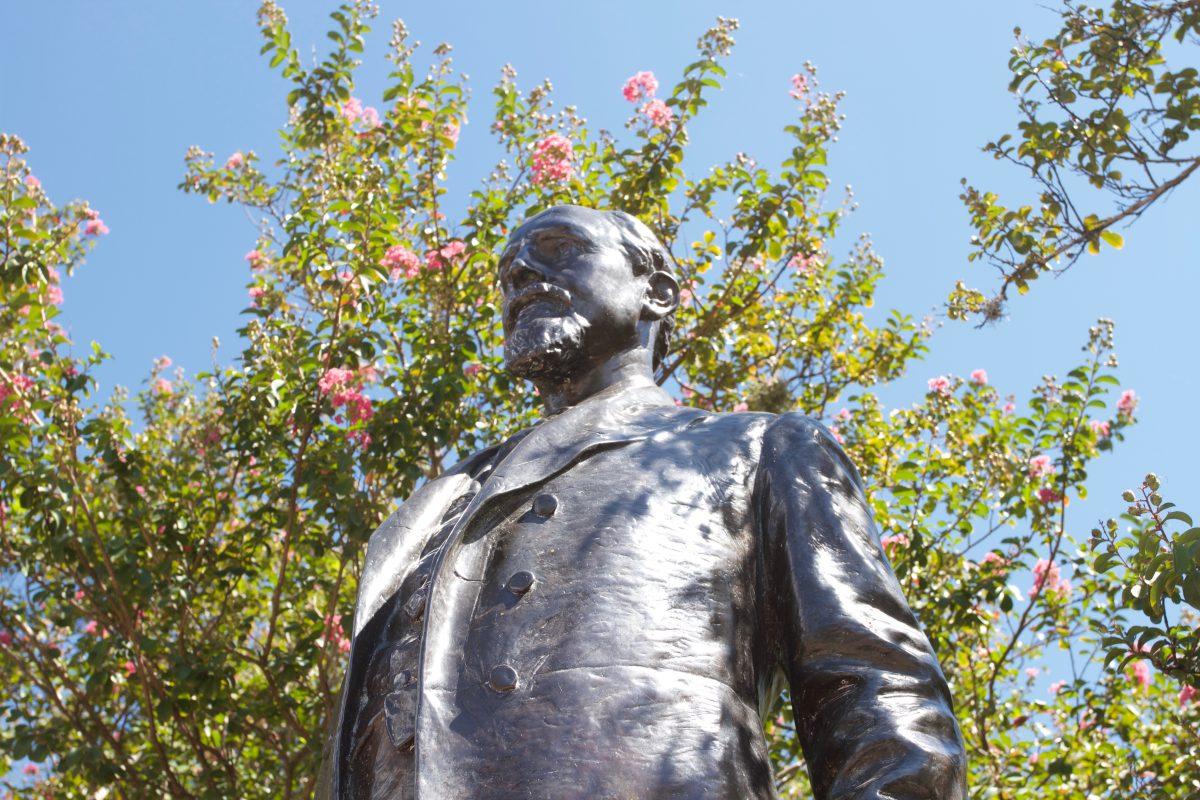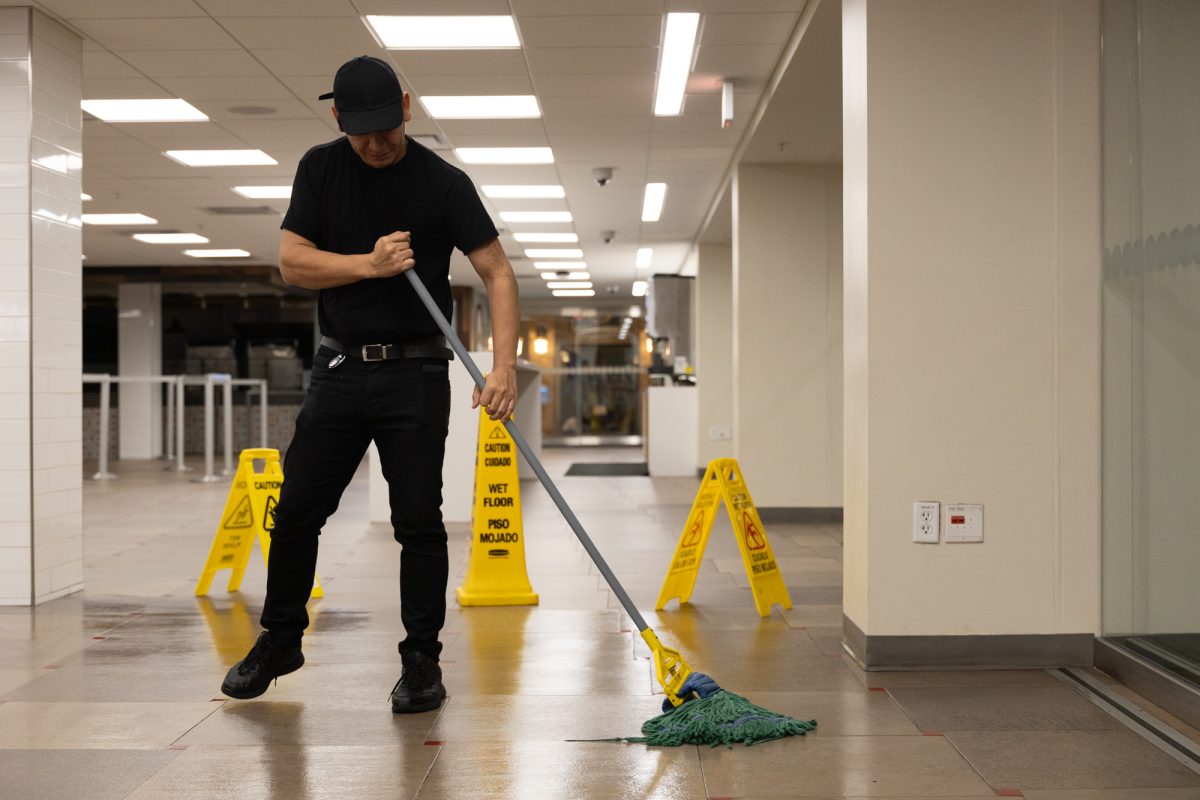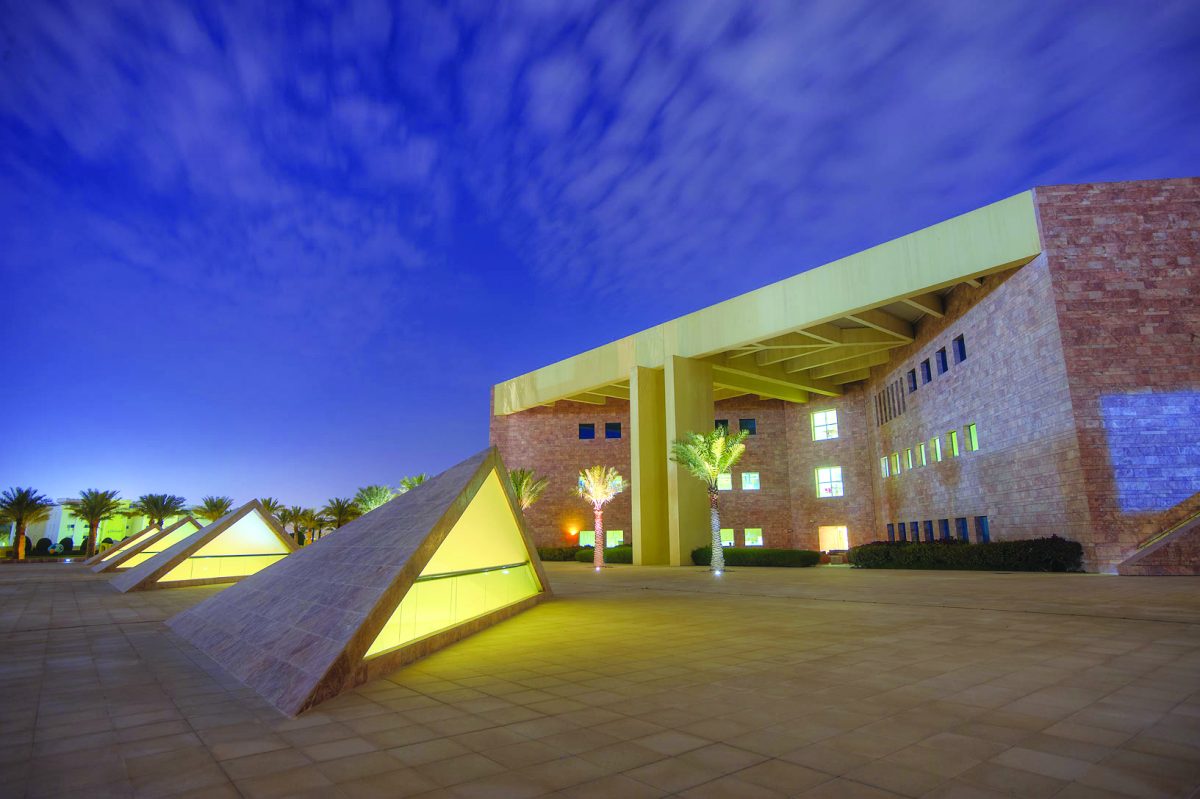As confederate monuments are removed from college campuses across the nation — including three statues relocated from a main area of the University of Texas at Austin campus — two of the most powerful voices in Aggieland say the statue of former Campus President, Texas Governor and Confederate General Lawrence Sullivan Ross will remain in its prominent position on the A&M campus.
The statue, affectionately referred to as “Sully,” has stood in front of the Academic Building since its dedication in 1918, making it the oldest sculpture on campus.
University President Michael Young said Ross is memorialized specifically for the critical role he played in securing the future of both Texas A&M and Prairie View A&M.
“Lawrence Sullivan ‘Sul’ Ross is honored on our campus as a former president of the school,” Young said. “Without Sul Ross, neither Texas A&M University nor Prairie View A&M University would likely exist today. He saved our school and Prairie View through his consistent advocacy in the face of those who persistently wanted to close us down.”
University System Chancellor John Sharp said Ross’s contributions to the university solidify his importance as a campus monument.
“Anyone who knows the true history of Lawrence Sullivan Ross would never ask his statue to be removed,” Sharp said. “It will not be removed.”
While Ross’s service in the Confederate army is not the reason he is remembered in Aggieland, the realities of his Confederate past have sparked protests and launched discussions about the role of monuments in promoting the values of a modern, diverse Texas A&M.
In an interview with the Battalion in late 2016, A&M Graduate and Assistant Professor of Ethnic Studies at Lawrence University Jesus Smith said when these aspects of Ross’s past are considered, it is understandable for some students to feel uneasy about his prominent role as an Aggie icon.
“It goes without question that Sul Ross was fighting on the side of the confederacy,” Smith said. “And for the many reasons the confederacy was in the civil war, one of those reasons for sure was to maintain slavery. I can understand how that feels for a lot of students when there’s a statue of someone who literally fought to maintain slavery.”
Young said that while Ross’s statue will continue to hold its prominent position in front of the Academic Building, the University will begin a process of evaluating other objects from the past.
“The Sul Ross statue will remain,” Young said. “We will look at other historical artifacts across Texas A&M to assess their consistency with our core values.”
Patrick Slattery, Professor and Associate Department Head for Graduate Studies in the Department of Teaching, Learning & Culture, said the image presented by A&M’s monuments could detract from the university’s current goals of promoting diversity and inclusion.
“Texas A&M has made valiant efforts at times — and meager gestures at other times — at expanding diversity and representation on campus,” Slattery said. “Some would say that we’ve met with success. Others would say that our attempts at creating more diversity and inclusion have been woefully inadequate. In either case, I would say that the statuary on campus in the current context, among other things, presents a visual obstacle to the university achieving its goals.”
Slattery said current events have provided a fitting opportunity for A&M to analyze the overall message conveyed by its statues and monuments.
“In light of the broad national movement to move confederate statuary and symbols to museum spaces with robust historical analysis, it is even more urgent for Texas A&M to engage a process with multiple constituencies to evaluate and reconfigure the entire aesthetic campus environment,” Slattery said.
According to Smith, these kinds of open, inclusive discussions about campus symbols are becoming more and more necessary as A&M grows and changes. Smith said gaining a more complete historical perspective of the figures that represent A&M will be critical to shaping the university’s future in this area.
“Knowing the history behind things is really important,” Smith said. “Knowing the complexity of a figure is really important and it helps us kind of step down from idolizing figures and, instead, appreciating what they might have done, understanding why not everything they represented was great or good and instead let’s think about what this might mean moving forward in terms of embracing a diverse Aggie family that’s here to stay.”
University Chancellor and President say Sul Ross statue will not be removed
August 22, 2017
Photo by Photo by Luke Henkhaus
Dedicated in 1918, the bronze statue of Lawrence Sullivan Ross stands in front of the Texas A&M Academic Building in the heart of campus.
0
Donate to The Battalion
Your donation will support the student journalists of Texas A&M University - College Station. Your contribution will allow us to purchase equipment and cover our annual website hosting costs.
More to Discover









